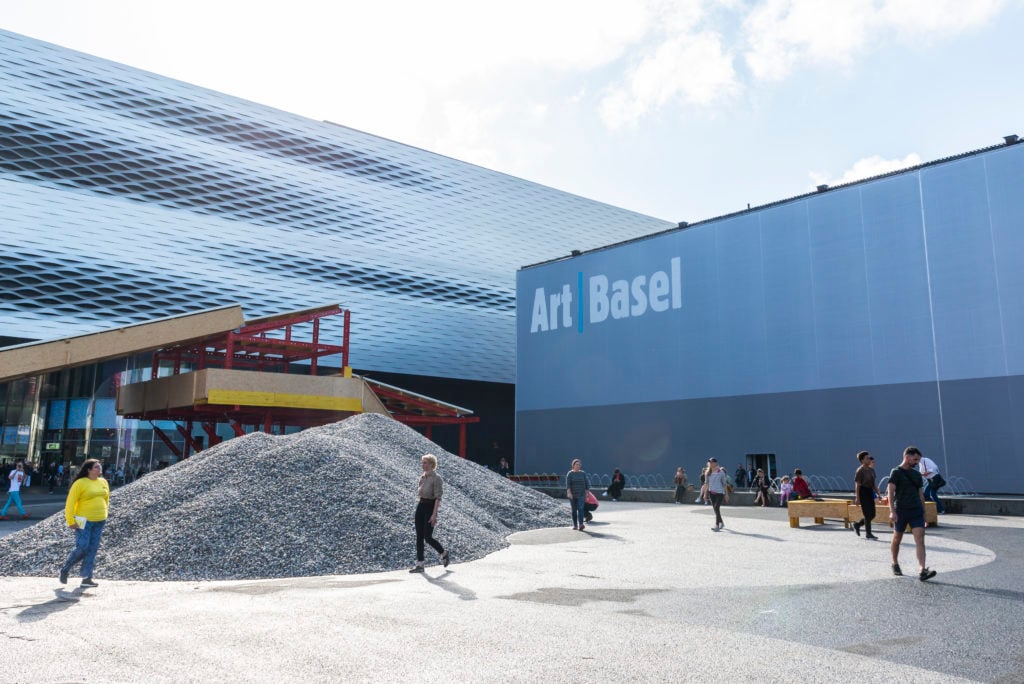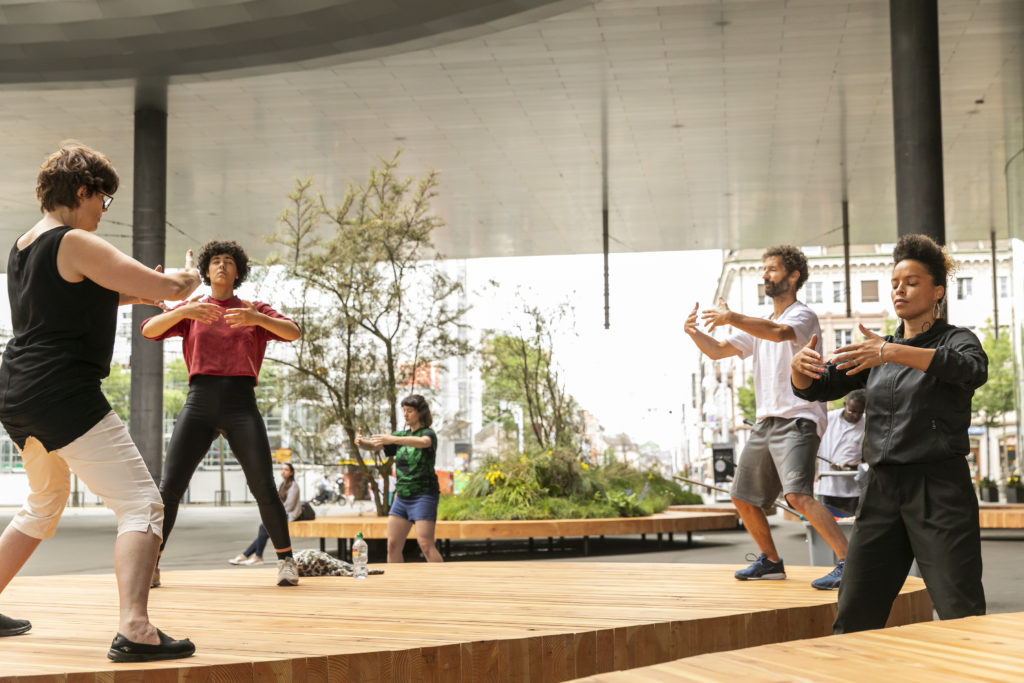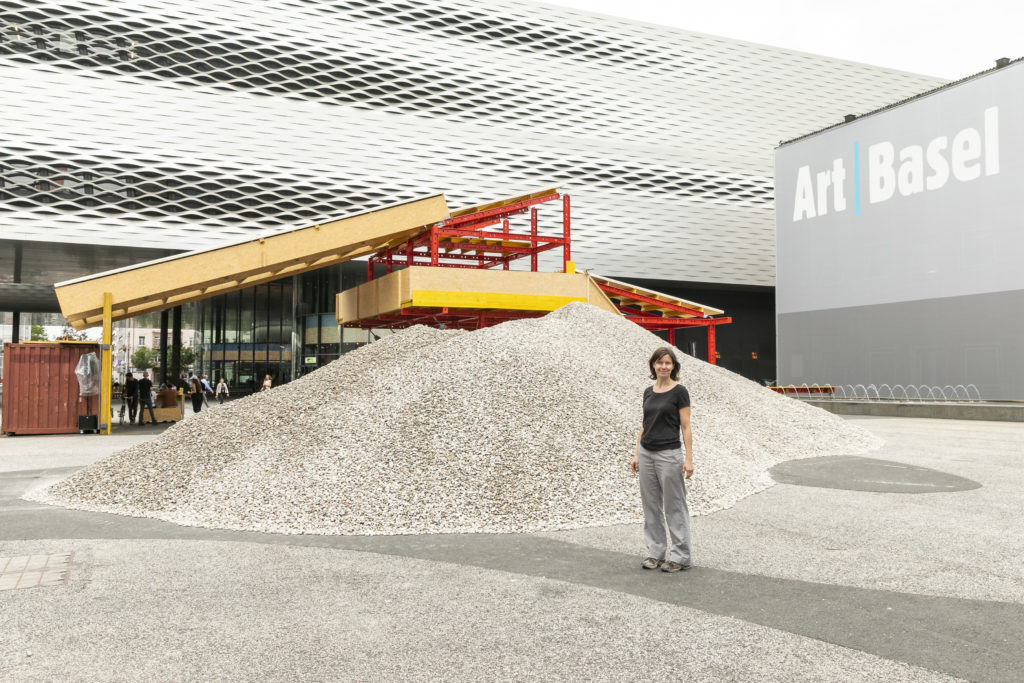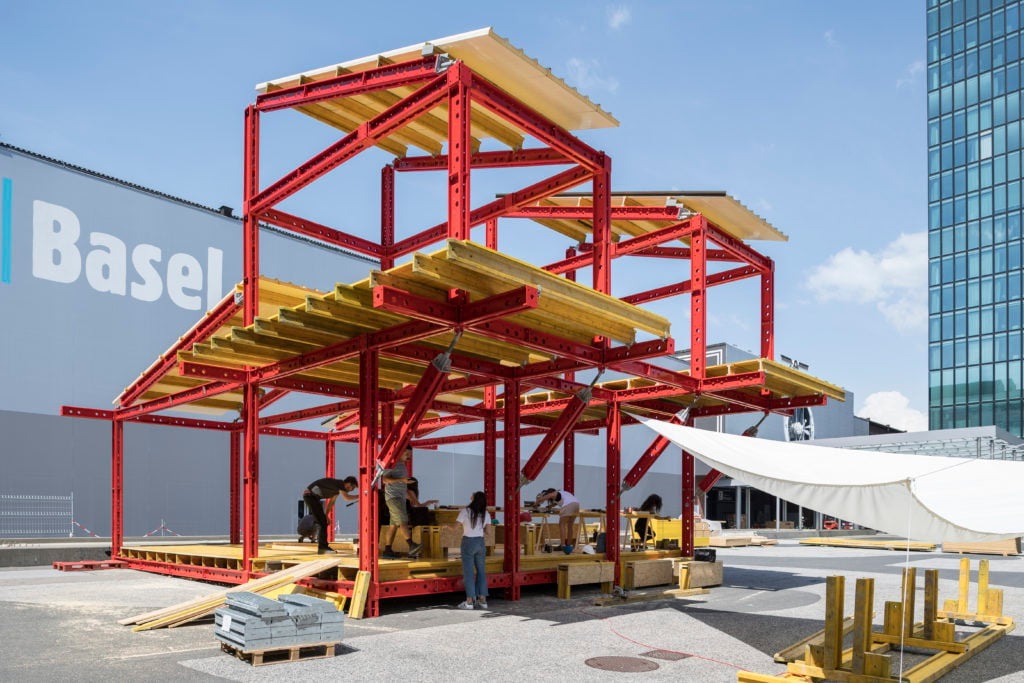On View
Creative Time Takes Basel: The NYC Non-Profit Brings Its Signature Brand of Community-Engaged Art to the Swiss Fair
This marks Creative Time's first international public project.

This marks Creative Time's first international public project.

Taylor Dafoe

On the surface, a US public art organization partnering with a major European art fair seems like a strange fit. But that’s exactly what’s happening now as Creative Time, the New York-based non-profit known for ambitious socially engaged projects, is in the midst of a project commissioned by Art Basel for the 2018 flagship fair in Switzerland.
Titled Basilea—the Spanish pronunciation of Basel—the project is a collaboration between artists Lara Almarcegui, Isabel Lewis, and the architecture firm Recetas Urbanas. And, like many of Creative Time’s ventures, the project is hard to sum up quickly. Organized by Creative Time’s new senior curator, Elvira Dyangani Ose—her first project with the company—it encompasses a three-week-long community construction, a large-scale environmental installation, and a diverse slate of public programming.

Installation view of Basilea (2018). Courtesy of Creative Time and Art Basel.
Basilea officially began on May 23 with the ground-breaking of a new civic structure designed by Recetas Urbanas and led by architect Santiago Cirugeda. Erected by volunteers using locally sourced, second-hand materials, the building is now being activated by a series of free workshops, performances, and participatory “occasions” exploring dance and movement, organized by multidisciplinary artist Isabel Lewis. The official programming kicked off Monday, June 11—the beginning of Basel week. (A full list of events can be found online.)
After the fair is over, the structure will be given over to one of the local partner organizations that assisted in its creation.
Surrounding the structure will be large mounds of gravel deposits—an installation by Spanish artist Lara Almarcegui. The piles of gravel, sourced from an active quarry nearby, grow each day by 250 tons—the same amount that’s taken from the quarry each day to facilitate construction projects in and around Basel. Almarcegui’s work purposely acts as a counterpoint to the other facets of Basilea, showing, as she tells artnet News, the “destruction of land behind architectural construction.”

Artist Isabel Lewis leading a movement workshop at Basilea. Courtesy of Creative Time and Art Basel.
This isn’t the first time Creative Time has partnered with Art Basel. In 2009, it commissioned LA artist Pae White to design a mini-cityscape for Art Basel Miami Beach’s new Oceanfront project. And the two organizations worked together once more the following year, producing a large pavilion constructed of glowing ropes, designed by two architectural firms—Phu Hoang Office and Rachely Rotem Studio.
This, however, the first time the Creative Time has been brought on to do a project outside of North America. In some ways, it’s been a long time coming.
“Our home and heart is New York City, but we always have an eye out towards international partnerships.” Alyssa Nitchun, Creative Time’s acting executive director, tells artnet News. The organization has been hosting its signature event, the Creative Time Summit, outside of the US for a few years now. The success of those events laid the groundwork for this project, Nitchun explains. “So when Art Basel approached us, it was an easy yes for us.”

Spanish artist Lara Almarcegui in front of her Basilea installation. Courtesy of Creative Time and Art Basel.
Upon being approached by Art Basel, Creative Time came up with several different proposals for the project. Of those, Nitchun says, Basilea “just felt right.”
“It felt right too in terms of the times—a communal, political longing to create a space that’s markedly different than our reality. And to create a space of imagination and possibility. It’s something that many of us are yearning for and striving for these days.” (Nitchun chose not to disclose the budget of Basilea, but did note that it’s in the “ballpark” of most of the organization’s projects.)

Installation view of Basilea (2018). Courtesy of Creative Time and Art Basel.
The goal for Basilea, notes Nitchun, is to “put on a classic Creative Time project in a new space and a new setting.”
What constitutes a “classic” Creative Time project?
“Well,” says Nitchun, “the project has to have an edge. It has to make people do a second or third take and want to dig deeper, and it should give artists new opportunities to push their practices. We want to continue to push new opportunities for artists, to continue to create new ways of thinking about public space and foster new conversations around community, politics, and what it means to be human in this world that is increasingly interconnected. For us, there’s no door an artist should kick in.”
Basilea will be on view through June 17, 2018 at the Messeplatz Plaza in Basel.